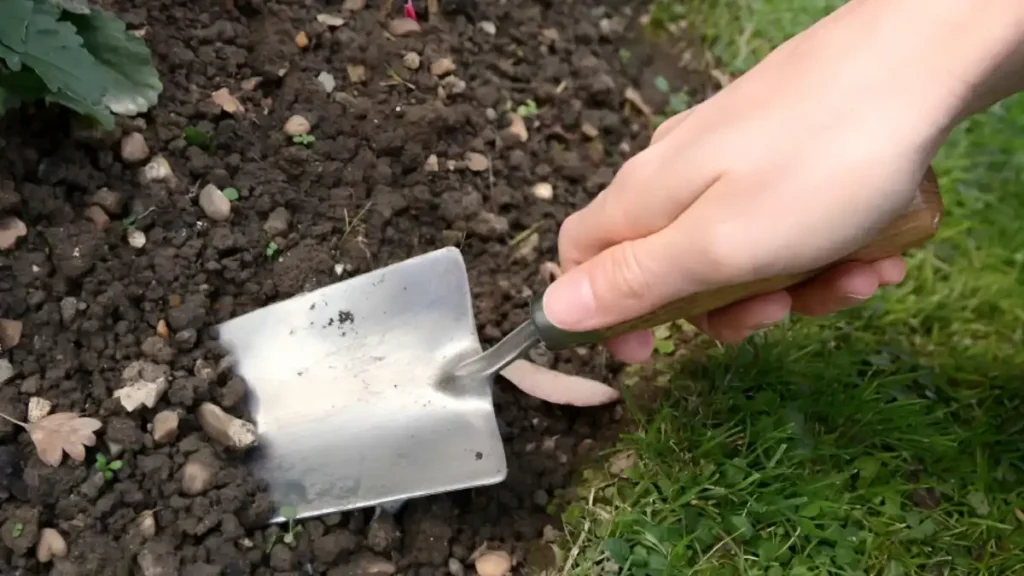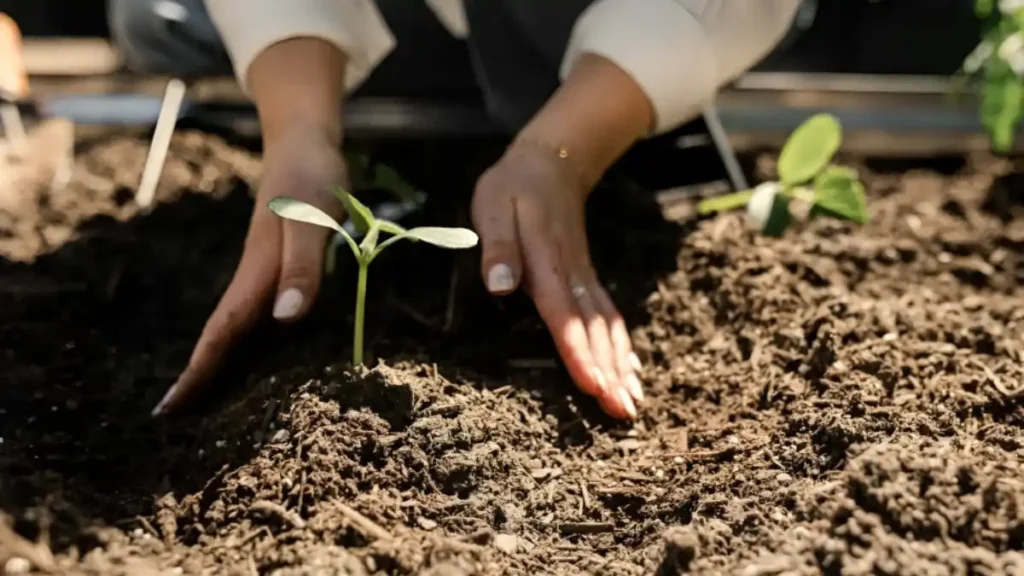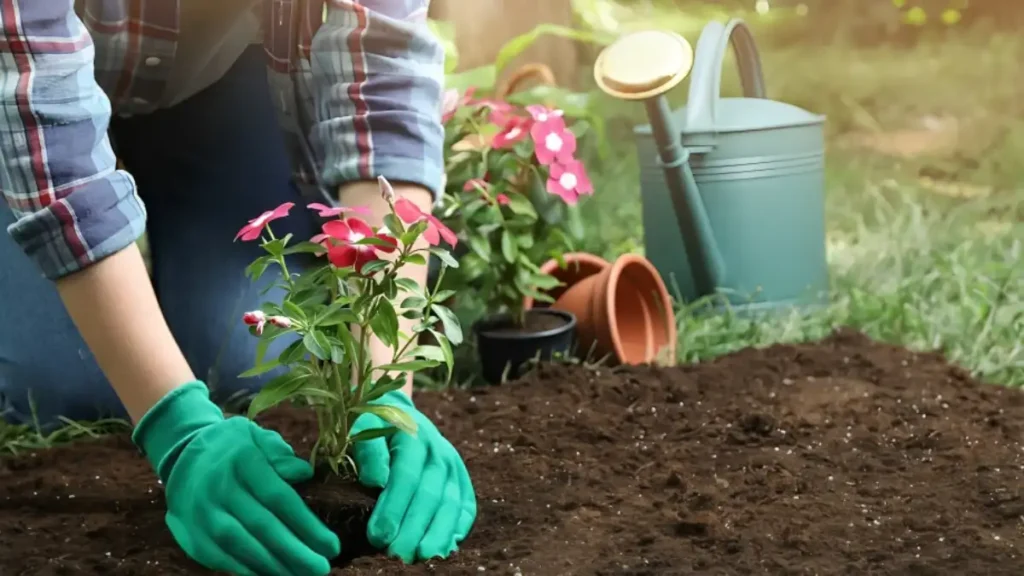Soil is a natural resource of humus, organic and inorganic particles, and broken-down rock. On average, rocks take at least 500 years to turn into soil. When rocks fragment into their component pieces, soil is typically created. Read our guide to learn about the different types of soil, their qualities, and their functions.
Learn about different types of soil:
The unique characteristics of different soil types allow them to be used for various purposes. The primary forms of soil will be covered.
Types of soil:
Loamy Soil:
- It combines the advantageous qualities of clay, silt, and sand. Additionally, there are sufficient air spaces between the particles of this soil to hold the air that plant roots need. Loamy soil is highly prized for agricultural applications since it can support a variety of plants and crops. It has been noted to have a enough amount of humus. Consequently, loam soil is the most fertile soil and has all the nutrients needed for plant growth.
Silt Soil:
- The soil of this kind is finer than sand. Although it has better drainage than clay soil, it is more fertile and retains water better than sandy soil. Among the three types of soil, silt soil is the most fertile. Thus, it is also applied in farming to increase the fertility of the soil. It may be harmed if worked or grazed in wet conditions.
Clayey soil:
- There is very little sand or silt in clayey soil, which is primarily made of clay. Clay soil is dense and sluggish to drain because its tiny particles fit together tightly. This soil is excellent at retaining water and preventing moisture and air from penetrating. The densest and heaviest soil type is clay, which is also the least conducive to drainage and the growth of plant roots.

Sandy soil:
- The big particles in sandy soil facilitate rapid water drainage and decrease nutrient retention. Sand soil contains very little humus. With this kind of soil, drainage systems perform admirably. Rocks such as granite, limestone, and quartz typically break down or fragment to generate sandy soil. However, sandy soil quickly dries out, which is detrimental to plants. The yield of sandy soil is lower than that of other soil types.
Chalky Soil:
- The majority of the calcium carbonate found in chalky soil is accumulated sediment. Chalky soil has the disadvantages of being alkaline and lacking in some minerals, such as manganese and iron. Increase watering and apply mulch around the plant’s crown to prevent drainage issues in this soil. In certain soils, a lack of certain minerals, such as manganese, causes the leaves to become yellow and grow more slowly. Using the right fertilizers to keep the pH balance is crucial to avoiding this.
Peaty Soil:
- In the realm of environmental and civil engineering, peat soil is regarded as one of the most troublesome soil types. As a result, peat soil frequently has a spongy consistency, a dark brown to black appearance, and a unique smell. Effective respiration of plant roots is made possible by the promotion of sufficient aeration. Peat soil’s non-renewable nature is a major disadvantage. Peat depletion can accelerate climate change by emitting greenhouse gases into the atmosphere.
Know the uses of soil:
- A variety of religious uses exist for soil. Crops used in agriculture are grown on soil to provide food for people and animals. Numerous species, including insects, earthworms, and bacteria, live in soil, which breaks down organic materials and improves soil structure.
- Making bricks and pottery requires the use of soil. Microbes in the soil help recycle nutrients from dead plants and animals. As water passes through layers of soil, it is naturally filtered. Plants that grow in soil can also be utilized to make construction materials, clothing, medications, and other items.
- Carbon is stored in soil, which lowers atmospheric greenhouse gas concentrations. The soil replenishes the ecosystem with nutrients by recycling dead plants and animals. In addition to holding water and minerals, soil gives roots a place to anchor.

Conclusion:
Overall, every type of soil offers unique benefits. To determine if a piece of land is suitable for construction or agriculture, it is crucial to know the varieties of soil. The distinct qualities of each of the soils mentioned above have an impact on plant growth potential and drainage. Learn about the many types of soil with this article.
Certainly! If you’d like to learn more, please consider following our WhatsApp Channel: Harvest Gardening
A frequently asked questions:
Q1. How many types of soil are there?
A1. Soils can be classified into six primary categories: sandy, clay, silty, peaty, chalky, and loamy. Based on the ratio of sand, clay, silt, and organic materials, each variety has unique properties.
Q2. What type of soil for snake plant to be used?
A2. The ideal soil for snake plants is sandy, well-draining, and free of excess moisture. To increase drainage, it is better to add perlite or sand.
Q3. What type of soil is generally most preferred for agriculture?
A3. In agriculture, loamy soil is normally favored because it includes critical elements such as potassium, phosphorus, and nitrogen, which are necessary for plant growth and healthy crop harvests.
Q4. What type of soil cannot be benched?
A4. The following types of soils cannot be benched: expansive, collapsible, unstable, or filled soils because of their high instability and collapse vulnerability.



